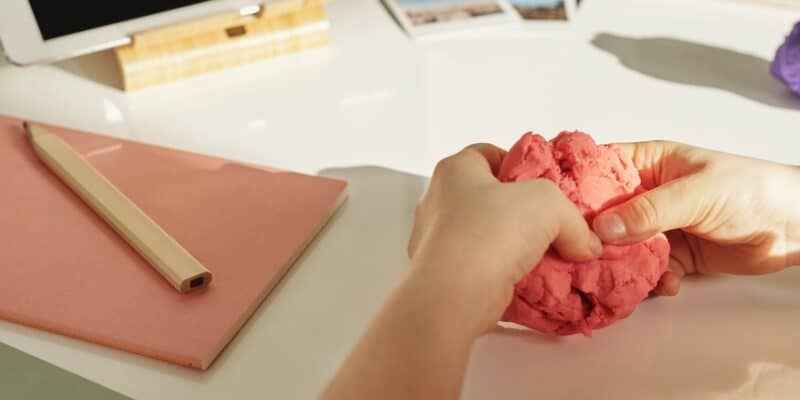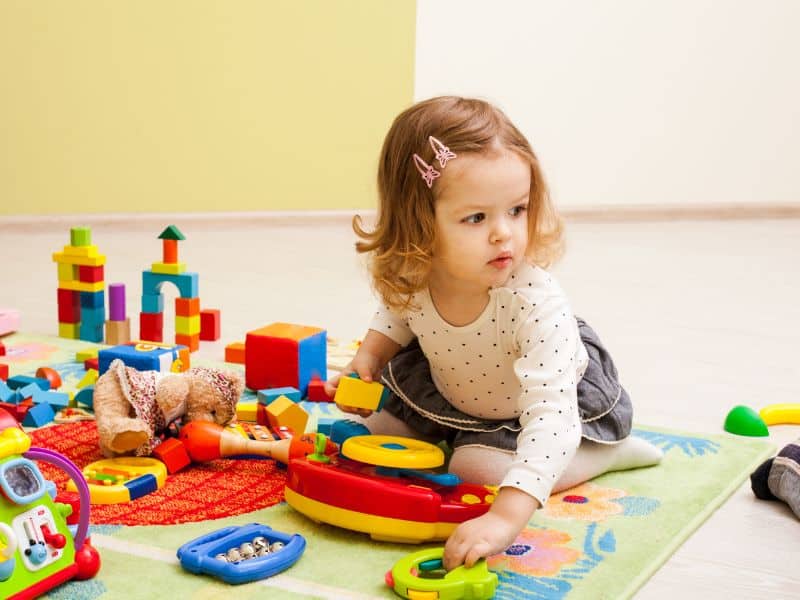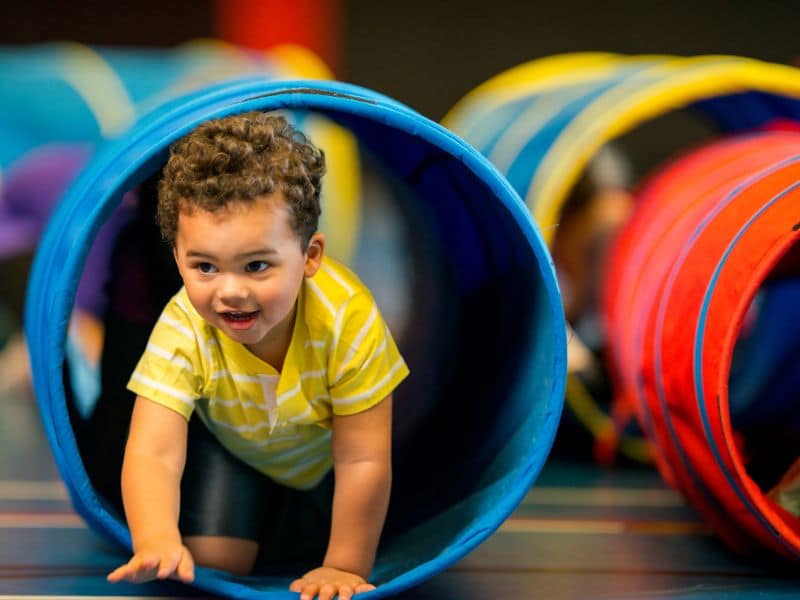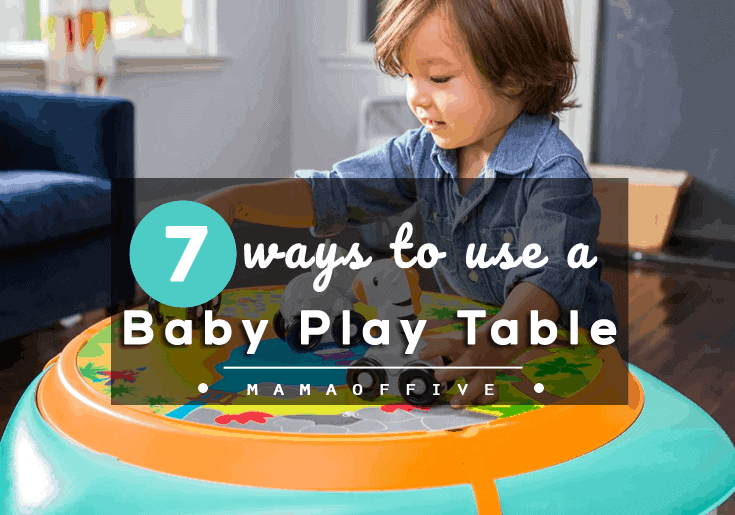The development of a child is crucial to the continuation of our society. Psychologists are continuously researching ways to help children grow, develop, and adapt to the world around them.
This, coupled with the rapid rise of neurodiversity awareness, has resulted in the creation and promotion of quirky and fun sensory-safe toys, such as fidget spinners and slime.
One children’s toy that has become extremely popular is kinetic sand. Kinetic sand, also known as magic sand, is often described as physics-defying semi-wet sand. With a texture of something between regular sand and playdough, it’s a simple, fun, and cleaning-friendly way to entertain children – and adults – for hours.
But what if your child accidentally eats kinetic sand? Is it safe? What is in this time-flying, creative product? Why is it so popular? And, what happens if my dog accidentally ingests it?
This, and more, will be answered below.
As an Amazon Associate, I earn from qualifying purchases. The links below may be affiliate links. Please read my disclosure policy for more information.
What is Kinetic Sand?

Kinetic sand baffles the brain. How is it dry yet wet at the same time? Why is it so silky soft, yet grainy? Why does it mould and hold its shape in one scenario, but not in the other?
In other words: What is it?
To understand this, we need to bring in some science.
Part of the appeal of kinetic sand is its simplicity, and that can also be true of its creation. Don’t believe me; just take a quick google search!
The internet is flooded with recipes to make kinetic sand. The ones you buy from the store are a combination of ultra-fine grain sand and dimethicone or polydimethylsiloxane – a widely common silicon compound that is used in hair products, diaper rash creams and skin care products.
A simple, at-home kinetic sand can be made using play sand, cornstarch, dish soap and water.
The name “kinetic sand” gives a bit of a hint to how these products react together. The mixing of dimethicone and sand transforms these very uninteresting and common ingredients into a non-Newtonian fluid.
A non-Newtonian fluid is a fluid that gets harder when under stress or when a force of energy is exerted on it, and looser when left alone. Kinetic relates to motion and energy.
When playing with kinetic sand, you are applying a force of energy and motion to it. This allows the kinetic sand to hold its shape and be moulded.
When you release and leave kinetic sand, it acts the same way as normal, loose beach sand does – the kinetic sand is no longer in motion or under stress. This allows kinetic sand to be used repeatedly, creating different opportunities to be played with.
It’s also a huge benefit for parents and cleaning – kinetic sand only sticks to itself! Let’s say some kinetic sand fell on the floor.
Forming the sand into a ball and simply dabbing the remaining sand with the ball picks it all up. No stains, no hassles. Carpet-floor owners, you can sleep easy!
Looking at the at-home kinetic sand, when a liquid is combined with cornstarch, it becomes thicker. Mixing the right amount of the wet ingredients and the sand cornstarch mixture allows the kinetic sand to stay dry enough to not stick to your hands, but wet enough to hold together.
Kinetic sand has a multitude of advantages for both adults and children:
- It enhances children’s fine motor skills.
- It increases sensory awareness.
- It develops hand-eye coordination.
- It fosters creativity – working as both a toy and a creative outlet or art form.
- It relaxes hyperactive children and adults.
- It’s a great tactile-sensory product for those with neurodiverse conditions.
Kinetic sand has been used by therapists in sand therapy and Autonomous Sensory Meridian Response – referred to as ASMR – videos to relieve stress.
Is Kinetic Sand Toxic?
It is scary to think about, but toys can often contain toxic materials like phthalates, BPA, BPS, flame retardant chemicals, lead, PVC, and formaldehyde. In fact, all toys pre-1978 – particularly flaking paint toys – are stated to have some lead in them!
In the United States of America, toys are regulated by the Consumer Product Safety Commission (CPSC). Despite this, the standards focus on sharp points or edges, small parts that children could swallow and lead in paint.
This means that toys are not tested for safety before being put on the store shelves. That really is terrifying. The CPSC, for example, works in a reactive way and toys are only recalled and checked when complaints are filed.
Parents, however, can rest assured about buying kinetic sand. Kinetic sand is not toxic. Dimethicone is not considered to be dangerous or toxic and does not present any risk to humans in daily use.
It’s even now used in devices made for cooking and baking! If eaten, kinetic sand will most likely pass through your digestive system unchanged and will not be absorbed into the bloodstream or by the body.
With this, however, kinetic sand is not a food product and is not made for eating. It can be a choking hazard due to small, fine grains of sand. This can also cause problems if accidentally breathed in.
The biggest issue with kinetic sand is that it can sit in the guts and intestines, potentially blocking them up. If a small amount of kinetic sand is consumed, experts recommend just drinking lots of water.
This water rinses the sand from the child’s mouth and helps it travel into their stomach. The kinetic sand should pass through their body with the only consequence being the colour of the bowel movements.
Large amounts, however, can cause constipation or gastrointestinal obstruction. Symptoms of gastrointestinal obstruction include:
- Vomiting
- Bloated or distended stomach
- Severe constipation
- Lack of appetite
This is when you seek medical care.
What Happens if Animals Eat Kinetic Sand?
With its fun colours and food-like appearance, kinetic sand can be appealing to dogs and cats. Like with children, kinetic sand can get stuck in the guts and this could cause serious digestive complications for our furry friends.
If you do notice that your pet has digested some kinetic sand, call your veterinarian immediately! It is important to discuss how much has been consumed and when it happened.
If a small amount has been consumed, you may have to take your pet to the vet to induce vomiting. While this can be done at home, inducing vomiting without medical experience can cause more serious issues for your pets later.
Large amounts of kinetic sand can cause blockages and will result in surgery to be removed.

Conclusion
In conclusion, kinetic sand is not toxic or poisonous and safe for both humans and animals. Ingestion and inhalation, however, can cause some serious digestive issues.
Its safety is part of the reason kinetic sand is so popular. Combined with its endless possibilities, sensory-safeness, skill development, easiness to clean and soft and silky feel, no wonder children all around the world are loving it and psychologists are recommending it!
Children are our future, and applying ways to grow, develop, and adapt our them to the world around us through educational and sensory-friendly toys is important. Kinetic sand is the perfect product to do just that.
So, parents – sit back, relax, and let the physics-defying sand help your children grow in a way that is fun, creative, and toxic-free!








